Take the guesswork out of your landscaping and put these tough shrubs to the test in your backyard. These shrubs are great for homeowners who are looking for easy-care solutions.
15 Hardy Shrubs for Your Yard
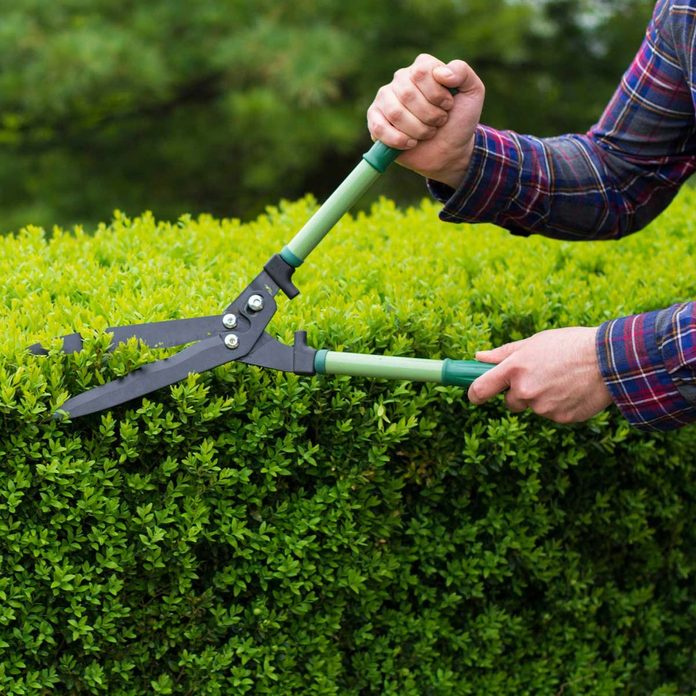
Tough Shrubs
If you’re looking to add some shrubs to your yard, you’ll find a lot of new varieties. Many are more colorful than older choices; some are smaller, making them more versatile in your landscape. Add a few tough plants to your landscaping for a solid foundation, then experiment with new varieties each year. Soon you’ll have a much larger list of low-maintenance beauties that are sure to flourish in your landscape.
Pro Tip: Instead of spending hours digging out a stubborn shrub, check how to remove shrubs without breaking your back.
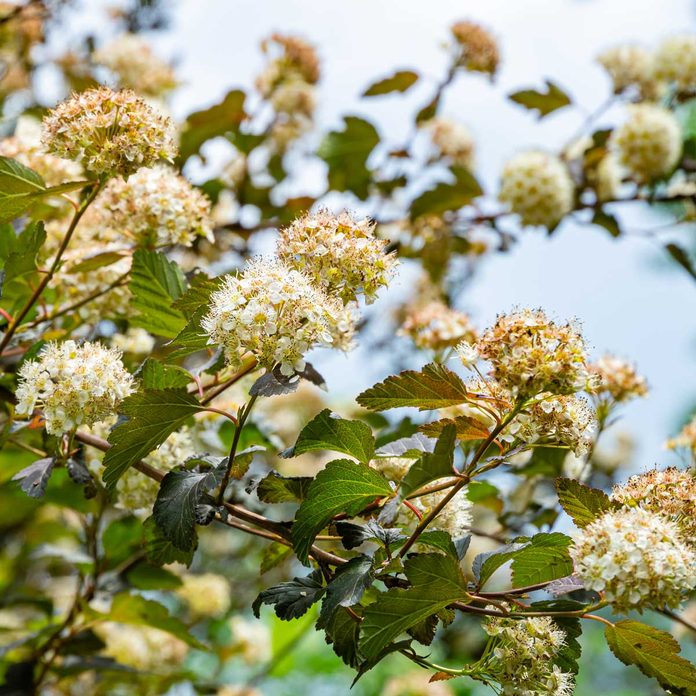
Ninebark
Ninebark is native to most areas. New cultivars with colorful leaves have moved this native plant out of the back border and into the spotlight. Use as a hedge, backdrop for flowers or in mixed borders. This tough shrub tolerates full sun to part shade, drought, salt, clay and rocky soils.
Why we love it: You can find lots of compact cultivars like lady in red (ruby spice), nugget, little devil and amber jubilee.
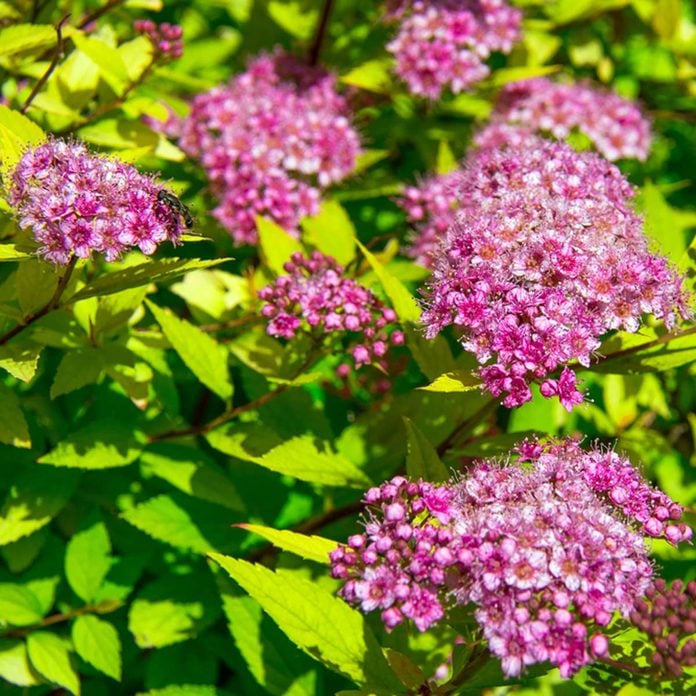
Japanese Spirea
Japanese spirea is a tough flowering shrub that never fails — one reason it’s often called a “gas station plant.” Indeed, you can leave it to its devices (much like landscapers do at commercial plantings like gas stations) and be assured it will still deliver a dependable supply of pink flower clusters in summer.
Why we love it: They’re generally more compact than the spring-blooming spireas, and some cultivars have colorful foliage to boot. One example is goldflame, which starts with bronze-red foliage in spring, matures to yellow-green, and takes on yellow, orange and copper hues as a fall finale.
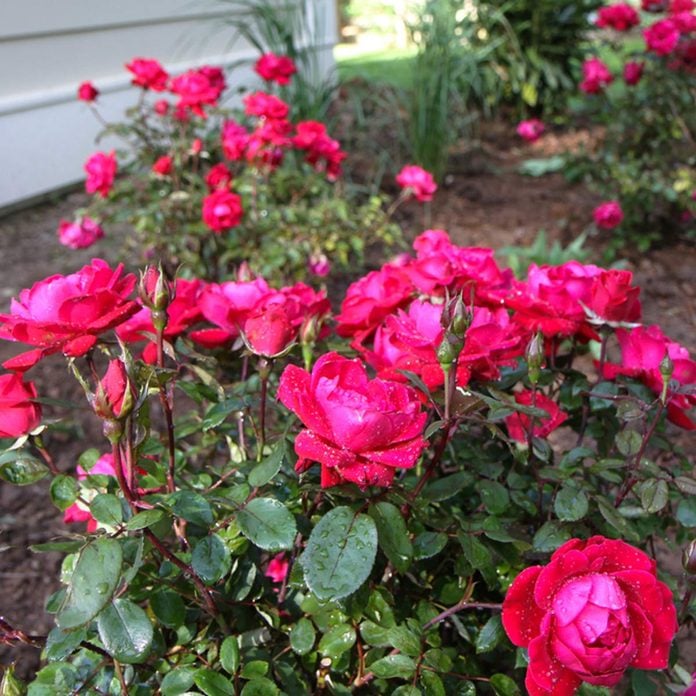
Landscape or Shrub Roses
About four feet tall and three feet wide, the mother of pearl shrub rose blooms almost continually if you snip off spent flowers. Otherwise it rests a bit before putting out new flowers, right up until heavy frost. Another low maintenance shrub rose variety we love is the knock out rose.
Why we love it: With color this delicious, mother of pearl is a natural for your perennial beds, where its never-ending bloom will fill in dead spots as other flowers go in and out of bloom.
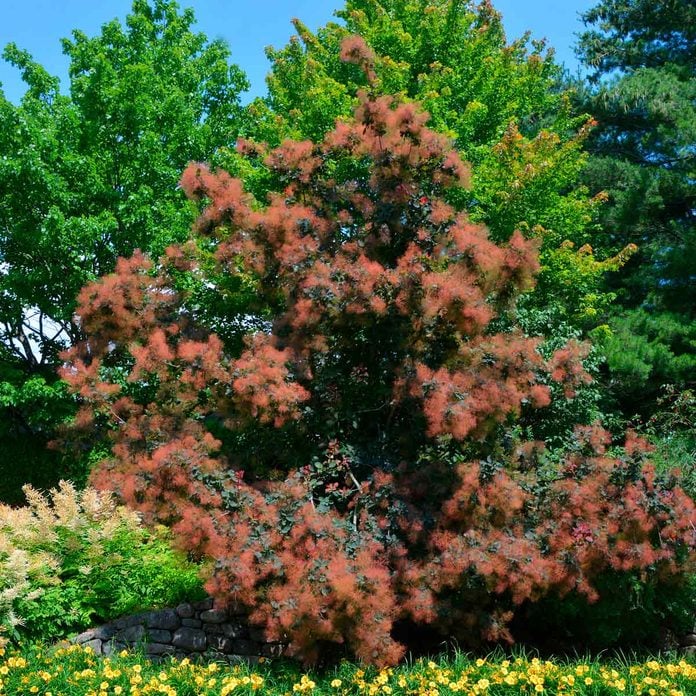
Smoke Bush
Smoke bush (Continus) is one of those flowering shrubs that gets people talking. “What’s that?” they’ll ask. Invariably, the question is posed when the puffy, smoke-like flower panicles bloom in the summer. The flower structures are most noticeable in midsummer but hold on in some form for months. No need to wait years for a return on your investment. These fast growing shrubs will develop true size and presence in a short period of time.
Why we love it: Fortunately, some smoke bushes also have colorful foliage to carry the entire season — varieties with burgundy or chartreuse leaves are the most notable.
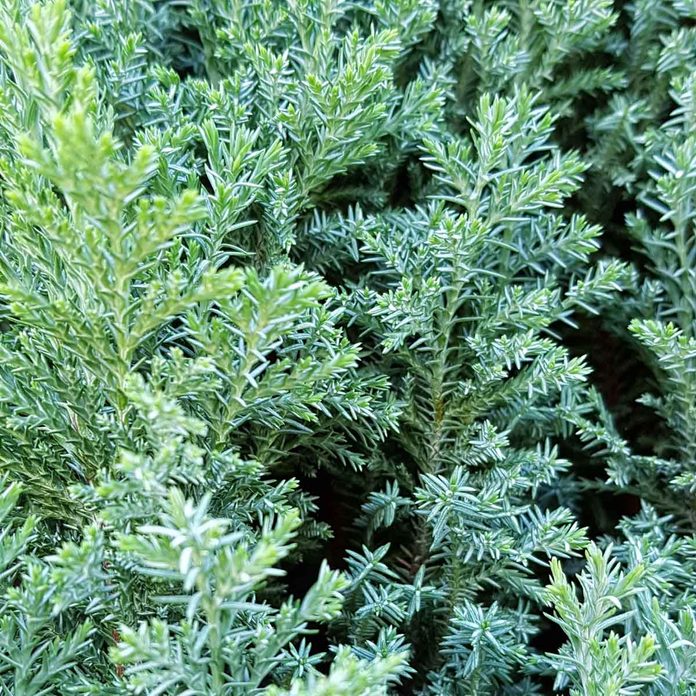
Juniper
This is the tough guy of the evergreen crew, thumbing its nose at dry, rocky soils and scorching sun. Deer and other browsing animals leave it alone, too. There are more and more juniper varieties each year, many with attractive textures and colors. It’s available in various forms, from spreading groundcover to mounded to upright, so juniper can serve a number of landscape purposes.
Why we love it: Use upright junipers as a substitute for arborvitae where deer are prevalent. Lower forms look good as foundation plants. Here are a few spreading shrubs you shouldn’t plant in your garden.
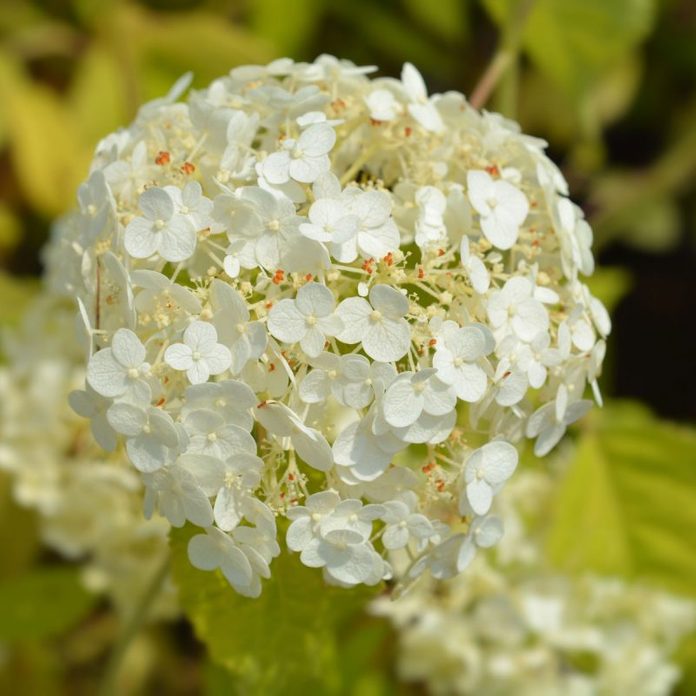
Annabelle or Smooth Hydrangea
The annabelle-type hydrangea grows quickly and makes a nice addition to shade gardens. Their hearty nature and low-maintenance makes them an easy plant to use as a hedge, in mixed borders or as a specimen. Grow in full to part sun and check the plant tag for proper spacing.
Why we love it: The panicle hydrangea, a close cousin, is a newer and shorter variety of the hydrangea and is also a low-maintenance shrub.
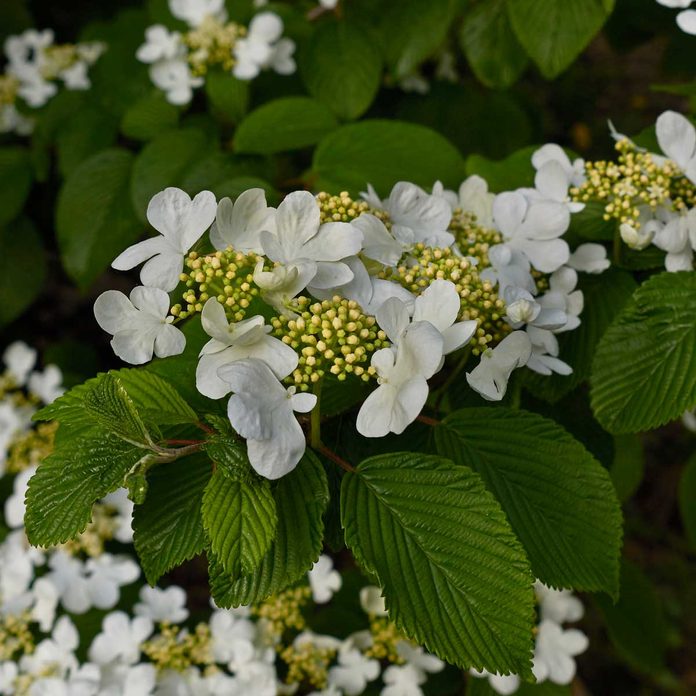
Arrowwood Viburnum
Viburnums populate a huge family of plants in a wide range of sizes and habits, each with white clusters of spring flowers that form red, blue or black fruits. Set your bird garden and shrub border ablaze with the red colors of this native viburnum. Grow it in full sun or partial shade. Select a cultivar like red feather for consistent and outstanding autumn color.
Why we love it: Birds love it and it has few pest problems. Plant it where you can watch your feathered friends feast on the blue fruit, but far enough away so you won’t smell the odoriferous spring blooms.
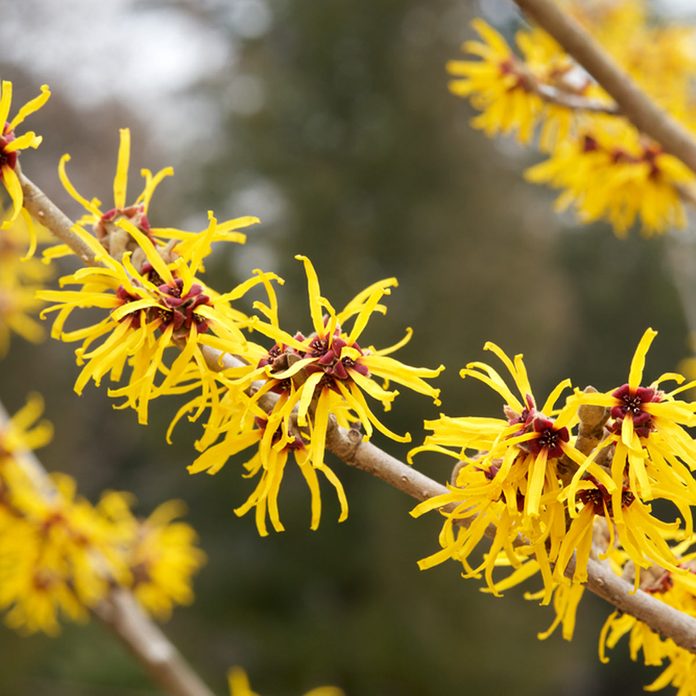
Witch Hazel
Is it overstating things to say witch hazel is, ahem, bewitching? Not when you see it unfurl its spider-like flowers in the winter. All but autumn witch hazel (a fall bloomer) are bare when in bloom, making the golden yellow, sometimes reddish orange flowers more conspicuous.
Why we love it: Witch hazels are tough, undemanding shrubs with stunning fall foliage and winter flowers.
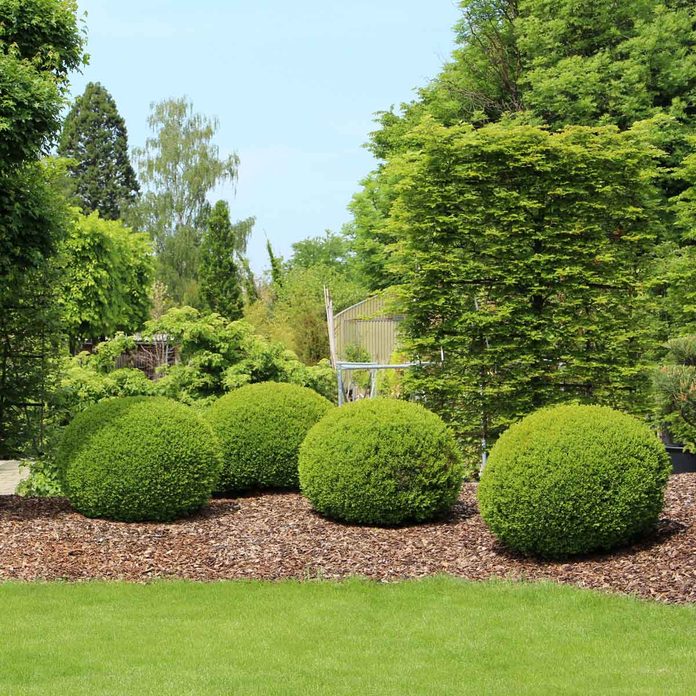
Boxwood
Many people are surprised to find boxwood shrubs are one of several drought tolerant plants. But in the more temperate regions of the country, boxwood are considered drought tolerant once established in the garden. They do best in well-drained, fertile soil. And although they will grow in full sun, a location with partial shade is best.
Why we love it: Boxwood does well when used for edging, creating borders and for screening.
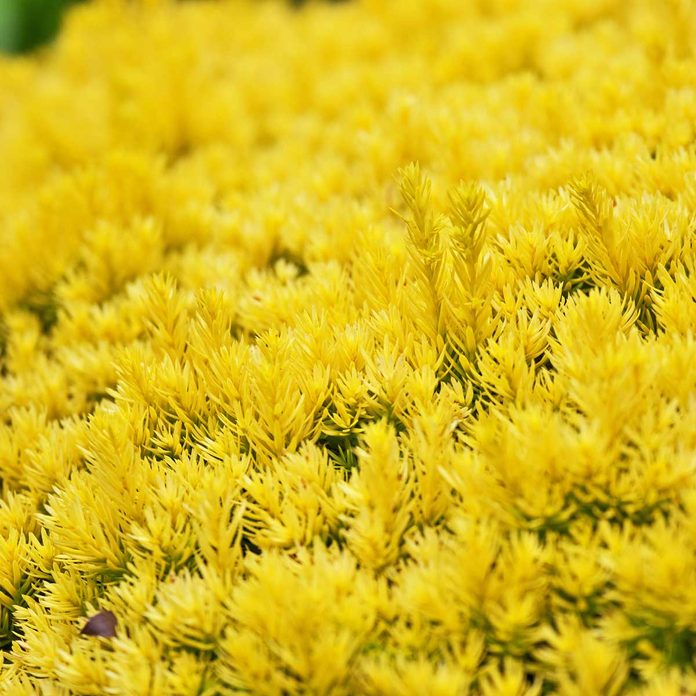
Bright Gold Yew
Add a splash of sunshine to your landscape with the golden needles of Bright Gold Yew. Grow it in full sun with a little afternoon shade for the best color. Needles eventually fade to bright green as the season progresses. It tolerates urban conditions and shade but needs moist, well-draining soil and protection from cold winter winds.
Why we love it: Relish its naturally small scale, or prune it to fit your space.
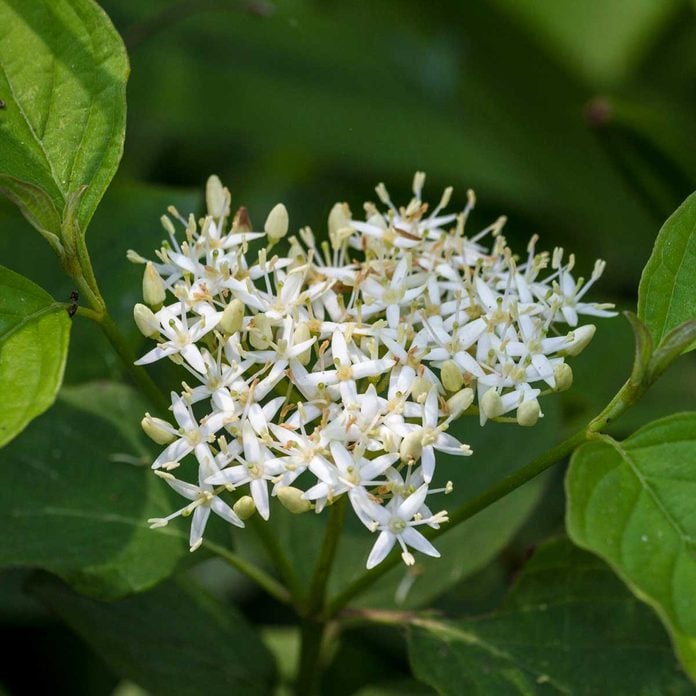
Redtwig Dogwood
Here’s an appealing, loosely arching shrub that grows quickly. The glossy green leaves turn maroon or orange by fall, and the vivid red twigs and whitish-blue fruit make for a colorful cool-season show. This dogwood works well in a mixed-shrub border. It’s easy-going but prefers somewhat moist soil, and does fine in sun or partial shade.
Why we love it: Birds love it! No matter what your space, there’s a dogwood species for you. Ask your local nursery for the best suggestions.
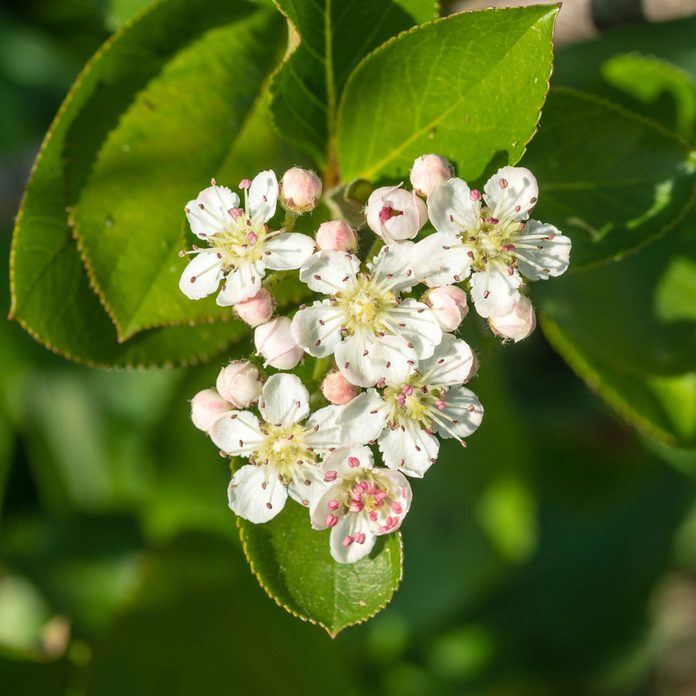
Chokeberry
This North American native brings year-round beauty to any landscape. Once the colorful autumn leaves drop, the red or black berries take center stage. Birds chow down on the fruit throughout winter. Chokeberry welcomes spring with white flowers and spends the summer decked out in glossy green leaves.
Why we love it: Adaptable chokeberry tolerates full sun to shade and wet to dry soil once established. It’s becoming a popular food crop for jam, jelly and wine.
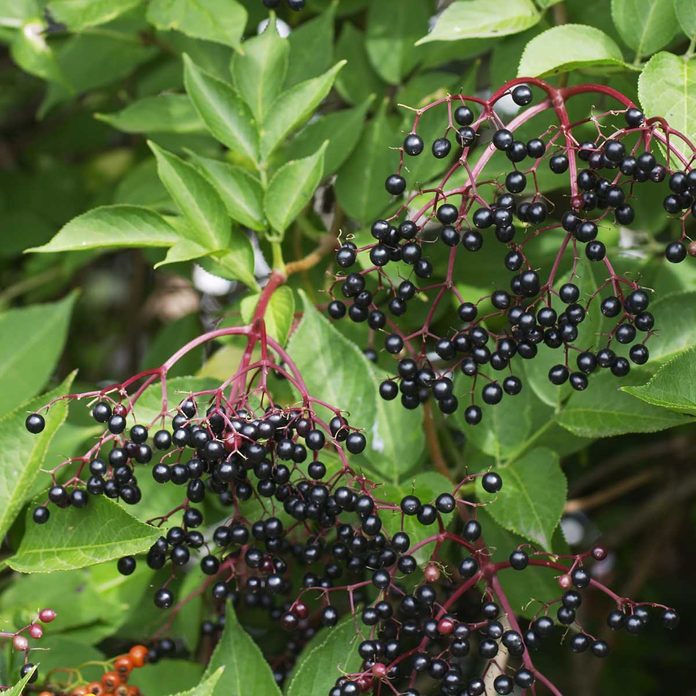
Elderberry
Add a few elderberries for you and the birds to enjoy. Butterflies are attracted to the white flowers that appear in summer. The small, purple-black fruit that follows attract birds and can be used for jellies, pies, juice and wine. New cultivars like black lace and lemon lacy add fine texture and color to the landscape.
Why we love it: Elderberries tolerate wet and even dry soil once established.
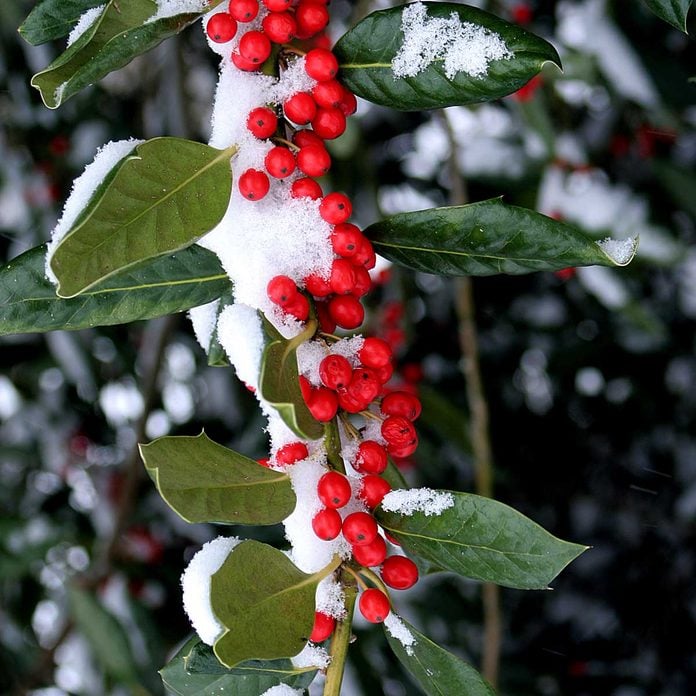
Winterberry
Grown as a small tree or a shrub, winterberry doesn’t get much attention during the growing season. Come winter, though, this wallflower demands to be seen when it bursts to life with bright red berries. Winterberry grows best in full sun and tolerates wet soil in spring and drought in summer.
Why we love it: The impressive collection of fruit lasts for months if the songbirds don’t gobble it up first. Plant winterberry in groups for big impact.
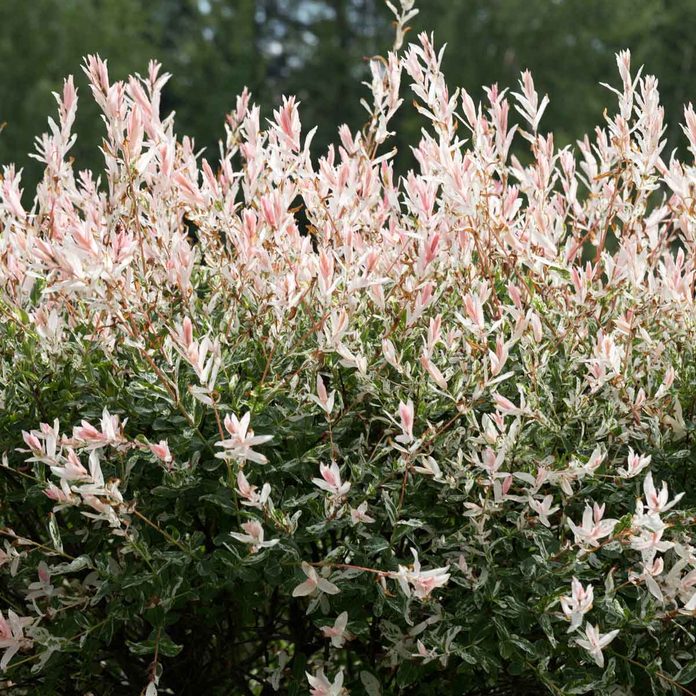
Dappled Willow
Dappled willow, also known as variegated willow, produces amazing leaves that are variegated when they are young. Whatever you choose to call it, it will surely become a favorite for you in your landscape.
You’ll be delighted when the vibrant, distinctive leaves unfurl from the buds in spring with a mottled mix of cream, green and pink colors. As the new growth matures, some of the pink colorations will subside, leaving a creamy white and grayish green variegated leaf.
This colorful shrub is really popular with homeowners looking for easy-care solutions.
Why we love it: This plant also displays good winter interest with coral and red stems that contrasts with the landscape.



















